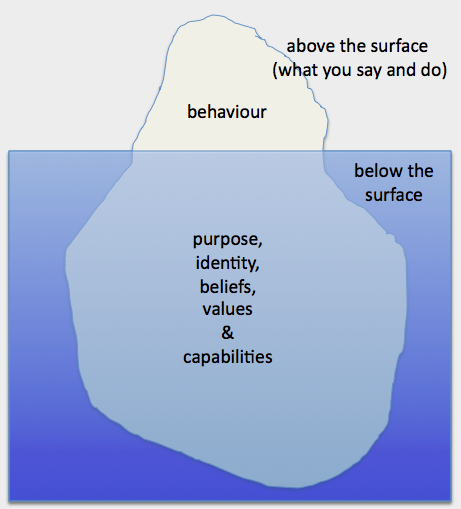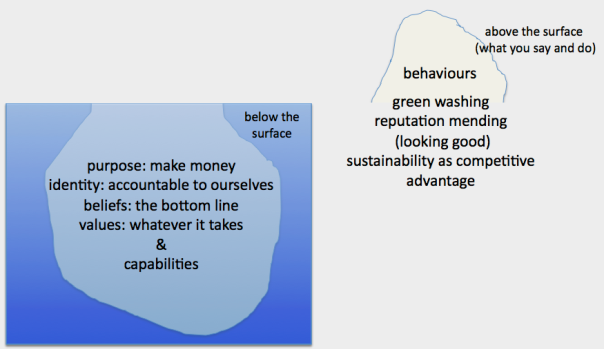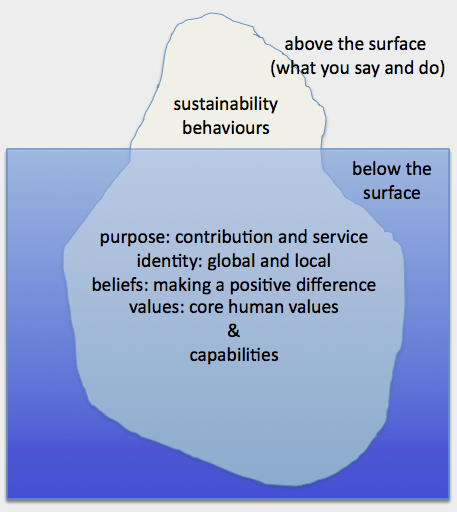Companies trumpet sustainability initiatives, but what is the significance of their sustainability initiatives? Another lens we can use to evaluate their efforts is a measure of sustainability depth. There are three levels of performance to consider:
- the company’s in-house sustainability performance
- the impact of the company’s products and services on society and the planet
- the company’s leadership role in sustainability in its industry or sector.

Lets look at examples of some industries to understand the significance of this approach.
Banking
You probably will have noticed banks that use advertising to announce their use of green cars. Or perhaps they have chosen to occupy green office space. While these initiatives are helpful, they are dwarfed by the impact the banks’ products and services have on the planet and society. The capital that they provide can support sustainable initiatives or more traditionally extractive initiatives. The flow of capital has tended to be more determined by risk analysis rather than an analysis of sustainability.
The practices and example of the Grameen Bank exemplify creative thinking and dedication to sustainable aspirations (in this case, the eradication of poverty). The achievements of the Grameen Bank leave most Western Banks looking homogenous and deficient in leadership. One notable exception (you may know of others) is Vancouver’s VanCity Bank. This statement from their Accountability report indicates their willingness to show leadership at all three levels.

Another evidence of their commitment to sustainability is their relative longevity – Citizens Bank, a subsidiary, was talking about sustainability before the turn of the century. Closer to home (New Zealand) the banks here were at least more conservative and responsible sheltering us from the worst of the financial crises.
In the banking industry, the impact of their in-house sustainability initiatives are miniscule, compared to the greater impact of their products and services and the banking industry’s huge influence on economies. The banks to support are, yes, those who run fleets of green cars, but more importantly are engaged in leadership discourse in their industries. The worst examples of banking were the junk-bond traders that were essentially corrupt and dishonest. Who are the banking leaders who will follow the example of Muhammad Yunus and position the industry to both serve and prosper?
Retail
As with banking, you can imagine retailers who focus on in-house sustainability, but are locked into the need to grow their business. They may be tempted to sell whatever they can to make a buck with little focus on the environment or wider society.
It appears that Walmart has become a very positive exemplar of deep sustainability. They have a long way to go – but are taking initiatives from in-house sustainability, through to industry leadership. Here are examples:
In-house sustainability – For Walmart, electricity is their number two operating expense. They are moving on two fronts. LED lights have been installed in freezer panels, providing a 70% reduction in energy consumption. LED lights will eventually be rolled out throughout stores and carparks. Walmart also have installations of solar panels underway. Over 30 stores are already installed with another 20 to 30 in the pipeline.
Another massive opportunity to improve in-house sustainability is with Walmart’s transport fleet. This video refers to a goal to increase transport efficiency by 100% from a 2005 baseline, by 2015. By the end of July 2011, they have achieved 65%.
Impact of products and services – Walmart aspire to improve the quality of food that their customers eat. Here is an extract from a recent article:
With more than 140 million customer visits each week, we have an opportunity to make a real difference in the nutritional quality of the food we sell, so we have a long-term goal to make food healthier and make healthier food more affordable.
First, we are reformulating thousands of our private brand packaged food items and working with branded products to do the same. By 2015, we will:
- reduce sodium by 25%
- reduce added sugars by 10%
- remove all remaining industrially produced trans fats in our packaged food.
And here is a video about organic lettuce production at Walmart.
Leadership role in sustainability – Because of its size, Walmart can be particularly effective as a leader in the retail industry. When they get interested in initiatives such as LED lighting, solar panels and transport efficiency, they indirectly accelerate the mass adoption of better technology by consequence of their size in the market place. Recently Walmart has turned its focus on food-waste, reacting to the news that approximately one-third of food produced globally is wasted and are working with the USDA on projects to reduce waste. They also are working to access produce closer to the point of sale.
The examples here are a sample of the great work that Walmart is doing and provide a great illustration of a company engaging with sustainability across the three dimensions identified here.
Drive and imagination is the key
In the positive examples here, including Professor Muhammad Yunus of the Grameen Bank and Walmart, we see clear evidence of a desire to create a better world. This drive in turn generates the cognitive resources of imagination and breadth of vision that create new possibilities and transform industries from the top to the bottom.
I would love to hear of more examples.











